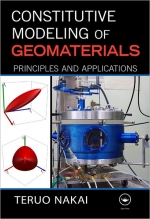Tab Article
Written by a veteran geotechnical engineer with a long record of research discoveries, Constitutive Modeling of Geomaterials: Principles and Applications presents a simple and unified approach to modeling various features of geomaterials in general stress systems. The book discusses the fundamentals of the constitutive modeling of soils and illustrates the application of these models to boundary value problems.
Helping readers easily understand the fundamentals and modeling of soil behaviors, the author first explains the ideas and formulations for modeling soil features in one-dimensional conditions. He then extends the one-dimensional models to three-dimensional models using the tij concept. The text covers the subloading tij model and other methods that describe density, bonding, time effect, and more. Moving on to the practical application of the constitutive models, the author presents the numerical simulations of typical geotechnical problems (numerical modeling) and the corresponding model tests (physical modeling).
Using a framework that leads to a unified set of material parameters, this book shows how to formulate a constitutive model capable of simulating the main features of soil behavior. It not only covers recent methods and models but also uses real test data to prove their reliability.


